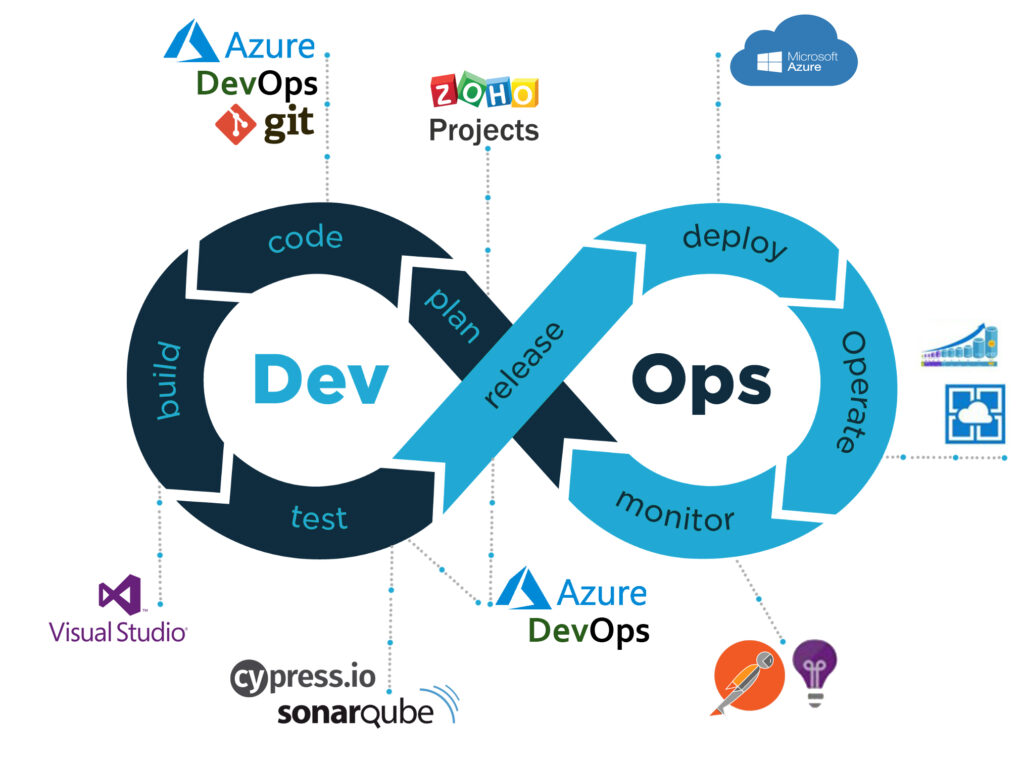In today’s fast-changing software development scene, DevOps and Agile have become key to deliver top-notch software. These two methods each have their own role, but when you put them together, you get a smooth workflow that boosts productivity, cuts down time-to-market, and makes software better overall. By mixing the best parts of both, companies can build better software quicker and more .
What is DevOps?
DevOps combines cultural ideas, methods, and tools to boost how a company can roll out apps and services. It connects development (Dev) and operations (Ops) teams encouraging teamwork and ongoing delivery. DevOps puts emphasis on automating tasks quick rollouts, and feedback cycles that help teams adapt and get better fast.
Key Benefits of DevOps:
- Quick Delivery: Automated tasks and CI/CD pipelines enable swift updates and releases cutting down the time it takes to bring products to market.
- Better Teamwork: DevOps promotes cooperation among development, operations, and other IT groups tearing down barriers and uniting everyone behind shared objectives.
- Top-notch Quality: Non-stop testing, watching, and input help spot and fix problems on in the creation process, boosting the software’s quality.
- Growth Potential: DevOps methods allow for smarter management of infrastructure and coordination making it a breeze to expand applications and services when needed.
What is Agile?
Agile is a way to manage projects and create software that focuses on step-by-step progress, teamwork, and being able to change. Rather than sticking to a strict plan, Agile aims to make small improvements to a product through quick focused work periods called sprints.
Main Advantages of Agile:
- Flexibility: Agile can adjust to changes in what a project needs to do, its requirements, and what’s most important making it great for fast-changing situations.
- Happy Customers: Regular updates and getting stakeholders involved make sure the product keeps meeting what customers want.
- Always Getting Better: Teams use feedback and look back at their work to improve how they do things and perform better.
- Clear View: Agile encourages talking often and using visual tools, like Scrum boards, to give everyone a clear picture of how the project is going.
The Teamwork Between DevOps and Agile
Agile puts the spotlight on being flexible developing in small steps, and working together. DevOps, on the other hand, zeros in on using machines to do the work getting things out there non-stop, and making sure everything runs . When you put these two ways of working together, they create a strong partnership that makes every part of making software better. Side by side, they make things run more and make sure teams can push out top-notch software in no time.
How DevOps Backs Up Agile:
- Continuous Integration and Deployment: Agile’s method of releasing code often fits well with DevOps practices like CI/CD. This makes sure that code changes undergo constant testing, integration, and deployment without manual work, which leads to quicker releases.
- Better Teamwork: Agile’s focus on team effort extends to DevOps. Dev and ops teams work side by side, which results in smoother workflows and faster problem-solving.
- Quicker Feedback: With DevOps tools and methods in place, teams receive fast feedback on code quality and performance. This allows Agile teams to make smart choices and improvements right away.
- Automation: DevOps has an impact on many tasks that people used to do by hand during development. This helps Agile teams zero in on rolling out smaller more frequent updates without worrying about mistakes that humans might make.
Putting DevOps and Agile into Action Together
What Works Best:
- Start Small: Launch DevOps and Agile practices on smaller, test projects. This shows their advantages and gives teams a chance to learn without putting too much pressure on the organization.
- Invest in the Right Tools: Pick tools that back both Agile project management (such as JIRA or Trello) and DevOps processes (like Jenkins, Docker, and Kubernetes) to simplify workflows and make sure everything works together .
- Foster a Collaborative Culture: Push for open talk and teamwork across all groups. Tearing down old barriers between teams is key for both methods to succeed.
- Continuous Learning: Build a culture where people always learn and get better by offering training chances and encouraging team members to share what they know.
Challenges and Solutions:
- Cultural Resistance: Some team members may push back against DevOps or Agile changes. To tackle this, explain the upsides, provide training, and show how it boosts productivity and gets things done faster.
- Tool Integration: A big hurdle in bringing DevOps and Agile together is making sure their tools play nice. Putting money into tools that work well together and getting them to sync up will stop things from getting messy or slowing down.
- Balancing Speed and Quality: It’s tough to keep standards high while working . To fix this, set up automatic testing, keep an eye on things, and do quality checks. This way, you can work fast without cutting corners on quality.
